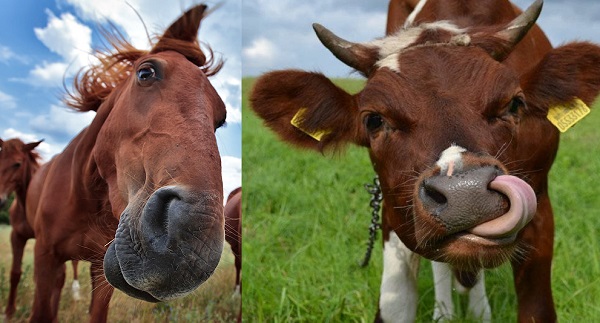Every owner of the infield dreams of a good harvest. And everyone certainly understands that in order to increase fruitfulness it is necessary to use the waste of domestic animal life. Manure - an indispensable organic fertilizer for the soil. What is the best fertilizer for the garden? How to prepare and apply it? What to choose - cow or horse manure? Let's figure it out.
Table of contents
The value of horse manure for the garden
This organic supplement is a leader in its nutritional value and content of useful minerals.Fertilizer effectively feeds the soil and serves as a natural stimulator of crop growth. When using horse manure, plants become less susceptible to various diseases.
A distinctive feature of this organic material is its ability to quickly decompose. At the same time a huge proportion of heat is released. That is why gardeners use horse substance in greenhouses as fuel to warm the beds.
There are several main advantages of horse dung:
- Guarantees active interaction of microorganisms.
- Well loosens the soil, retains moisture.
- Improves the chemical and physical properties of the soil.
- Provides optimal temperature conditions of the soil.
- Protects plants from adverse climatic conditions and various diseases.
Surprisingly, the only disadvantage of the horse's organic material is that it emits a significant amount of heat.
There is another nuance. There are not many horse farms in the country. The number of horses is declining. Therefore, getting the necessary amount of such fertilizer is becoming more problematic.
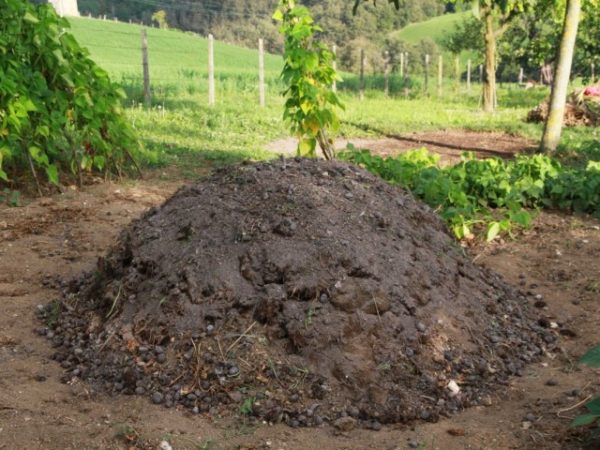
The benefits of cow dung
One of the most popular types of fertilizers is cow manure. It is a treasure trove of many essential macro and microelements that contribute to the development and maturation of crops.. In its composition and appearance, mullein may differ (depending on the age and sex of the animal). Therefore, experts advise the use of this fertilizer metered, adjusted for the properties of horticultural crops and soil parameters. Korovyak possesses such useful properties:
- Contains all the necessary elements and substances useful for plant growth.
- Effective impact of manure on the ground. The result will not keep you waiting long.
- Magnesium and potassium reduce the acidity of the soil.
- This type of organic material reliably protects plants from various pests and many diseases.
- The cost of such feeding is relatively low. It will not be difficult to purchase it.
The disadvantages of cow droppings include a peculiar smell. Also, the balance of useful substances has not been fully studied (at the moment it is approximate).
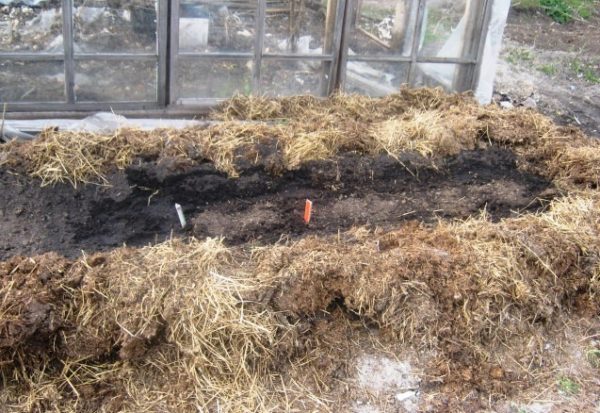
Fertilizer composition
The considered organic species, as already noted above, are replete with various macro and microelements. Among the main ones are the following:
- nitrogen, directly affecting plant growth (in horse manure - 4.7 g. in cow dung - 3.5 g)
- potassiumresponsible for the rational use of water and contributing to the formation of the root system; using potassium, plants produce immunity to droughts and severe frosts (2 g: 1.4 g, respectively)
- calciuminvolved in the neutralization of organic acids (3.5 g: 2.9 g)
- phosphoruswhose stocks affect the yield (3.8 g: 3 g).
It is necessary to understand that these values are averaged. Actual numbers may vary in any direction. It all depends on the diet, age of livestock, in what conditions he was kept.
By all accounts, horse manure is still superior to cow. Experts note that horse manure on heavy soil acts as a baking powder. Another very interesting detail is that the horses stomach is absorbed by almost all the seeds (unlike other animals) and only a small amount of them gets into the ground.
| Dung, litter | Content, g / kg manure weight | |||
| nitrogen | phosphorus | potassium | calcium | |
| Cow | 3,5 | 3,0 | 1,4 | 2,9 |
| Horse | 4,7 | 3,8 | 2,0 | 3,5 |
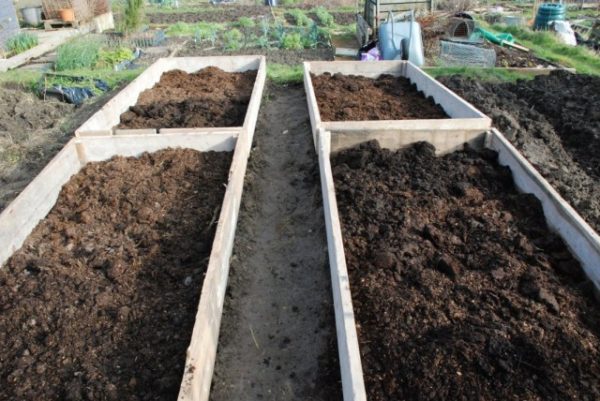
Interaction with crops
Fresh manure into the soil is not recommended. Although the content of nutrients in such a substance is large - in full plants can not assimilate them. Therefore, such manure in small quantities is used only in the form of plant nutrition, diluted with water.
But humus is significantly inferior to fresh organics in the usefulness of nutrients. But thanks to chemical reactions in the process of decay, all elements become digestible for crops.That is why humus is incomparably more useful for any trees and vegetables. Hence the conclusion - fresh fertilizer is the leader in nutritional value, and humus - in digestibility.
Feed in the form of horse manure is necessary for such plants:
- zucchini, cucumbers, that is, all melons; use implies a reasonable dose;
- potatoes, carrots, cabbage and all root vegetables;
- celery.
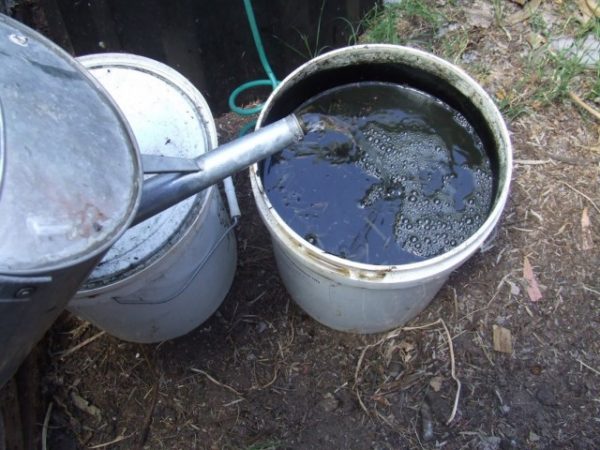
Mullein is used for almost all crops. The exceptions are:
- radish, radish and cabbage;
- root vegetables, in addition to beets;
- onion garlic;
- all beans.
And then look at the table with the norms of spreading manure for different crops:
| Culture | Application rate, kg / m² area | The frequency of introduction |
| Onions, cabbage, garlic | 4-6 kg / m² | From autumn or spring digging |
| Cucumbers, zucchini, squash, pumpkin, melon | 6-8 kg / m² | From autumn or spring digging |
| Tomatoes late, medium and late varieties of white cabbage | 4-5 kg / m², under cabbage up to 6 kg / m² | From autumn or spring digging |
| Dill, celery | 5-6 kg / m² | From autumn or spring digging |
| Carrots, Potatoes, Beets | 4 kg / m² | From autumn or spring digging |
| Berry (currant, raspberry, gooseberry) | Layer up to 5 cm | Annually only in autumn |
| Pome and stone fruit crops | Up to 3 kg under each tree | In the fall with an interval of 2-3 years |
| Strawberry wild-strawberry | 10 kg / m² between the rows | In the autumn, 1 time in 3 years |
| Grapes | Solution: 1 part of mullein per 20 parts of water | In the autumn, 1 time in 2-4 years |
With full confidence - which manure is better? - can not answer. As always, everything in the world is relative. Each crop requires the use of a particular type of fertilizer. Horse or cow dung with reasonable use, can work wonders. Have a good harvest!
